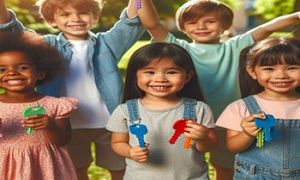The following lists the sub-outcomes, examples of evidence of when children can achieve each sub-outcome and how educators can promote and help children to MTOP Outcome 2: Children And Young People Are Connected With And Contribute To Their World V2.0.
School-age children are increasingly involved in a wide range of communities. These might include families, schools, school-age care settings or local communities. As children participate in these communities they develop their capacity for independence and self-direction.
Learning Outcome 2 - Children And Young People Are Connected With And Contribute To Their World
Children and young people develop a sense of belonging to groups and communities and an understanding of their reciprocal rights and responsibilities necessary as active and informed citizens
This is evident when children and young people, for example:
- recognise that they have a right to belong to many communities
- cooperate with others and negotiate roles and relationships in play and leisure experiences
- take action to assist children and young people to participate in social groups
- broaden their understanding of the world in which they live
- express an opinion and contribute to fair decision-making in matters that affect them
- build on their own social, cultural and family experiences to explore other ways of being
- learn to ‘read’ the behaviours of others and respond appropriately
- understand diverse ways of contributing through play and meaningful projects
- respond positively to others, reaching out for company and friendship
- contribute to decision-making and action-taking about matters that affect them
- make decisions about who they engage in play and leisure with
- understand how their ideas and contributions have been used in decision-making
- work in partnership with educators to plan play and leisure experiences
- advocate for their own rights with the adults who care for them
- become aware and use the 7Rs of sustainability: reduce, reuse, recycle, respect, repair, reflect and refuse as part of economic sustainability
- engage in conversations with older adults about topics of mutual interest.
Educators promote this learning for all children and young people when they, for example:
- promote a sense of community within the school-age care setting
- build connections between the school-age care setting, schools and the local community
- provide opportunities for children and young people to investigate ideas, complex concepts and ethical issues that are relevant to their lives and their local communities
- assist children and young people in their explorations of natural and constructed environments
- investigate the interdependence between people, animals, plants, lands and waters
- model language and actions that children and young people can use to express ideas, negotiate roles and collaborate to achieve goals
- scaffold children and young people’s opportunities to participate and contribute to group activities
- plan opportunities for children and young people to participate in significant ways in group discussions and shared decision-making about rules and expectations and activities
- create opportunities for collaboration with adults of all ages
- support children and young people to form their own groups
- create a range of ways for children and young people to participate in programming decisions
- create opportunities for open and authentic partnerships with families, communities and organisations including Aboriginal and Torres Strait Islander people and those from culturally diverse backgrounds
- inform children and young people about the outcomes of decision-making processes they have been involved in
- provide opportunities for diverse groups of children and young people to contribute to program planning
- ensure partnerships with Aboriginal and Torres Strait Islander communities and organisations are genuine and sustainable
- build children and young people’s awareness of the 7Rs of sustainability: reduce, reuse, recycle, respect, repair, reflect and refuse as part of economic sustainability
- create opportunities to contribute to community well-being, e.g. food banks.
Children and young people respond to diversity with respect
This is evident when children and young people, for example:
- use opportunities to participate in and develop an understanding of diverse cultures, heritages backgrounds, traditions and family structures
- demonstrate awareness of connections, similarities and differences between people and react in positive ways
- listen to others’ ideas and respect diverse ways of being and doing
- practise inclusive ways of achieving coexistence
- interact respectfully with diverse gender and cultural identities
- have access to resources with diverse representations of culture, heritage, tradition, capabilities and gender
- explore kinships systems, their relationships, and connections that they have built with their own community
- become aware of different linguistic and cultural events, e.g. Diwali, Easter, Chuseok, Harmony Day
- Aboriginal and Torres Strait Islander children and young people connect with their own community events and activities, e.g. NAIDOC, Sorry Business, Reconciliation Week
- explore local Aboriginal and Torres Strait Islander people’s cultures and connections with local places and people (past and present).
Educators promote this learning for all children and young people when they, for example:
- plan experiences and provide resources that broaden children's and young people’s perspectives and encourage appreciation of diversity
- engage in interactions with children and young people that promote respect for diversity and value distinctiveness
- expose children and young people to different languages and dialects and encourage appreciation of linguistic diversity including cultures
- encourage children and young people to listen to others and to respect diverse identities and perspectives
- demonstrate positive responses to diversity in their own behaviour
- explore the culture, language, heritage, backgrounds and traditions of children and young people within the context of their family and community, e.g. Diwali, Easter, Chuseok, Harmony Day
- provide resources with diverse representations of culture, heritage, tradition, capabilities and gender
- practice Aboriginal and Torres Strait Islander ways of learning including storytelling, yarning and deep listening with children and young people, their families and communities
- ensure that Aboriginal and Torres Strait Islander resources are genuine and appropriate
- provide opportunities for Aboriginal and Torres Strait Islander children and young people to connect with their own community events and activities, e.g. NAIDOCC, National Aboriginal
- and Torres Strait Islander Children and Young People’s Day, Sorry Business, Reconciliation Week
- use creative forms of expression to explore diversity and emotions
- recognise opportunities to use digital technologies to find answers to questions and document discoveries.
Children and young people become aware of fairness
This is evident when children and young people, for example:
- become aware of ways in which people are included or excluded from physical and social environments
- develop the ability to recognise unfairness and bias and the capacity to act with compassion and kindness
- are empowered to make choices and problem-solve to meet their needs in particular contexts
- understand what it means to be treated fairly and to treat others fairly
- think critically about fair and unfair behaviour
- understand and evaluate ways in which texts and media construct identities and create stereotypes
- develop appreciation and respect for different ways of knowing, being and doing
- engage in recapitulative play
- investigate the cultural and linguistic diversity represented in their community through a range of creative expressions
- engage with concepts of citizenship, social justice and equity, e.g. taking action to help communities in distress following fires, floods and drought.
Educators promote this learning for all children and young people when they, for example:
- notice and listen carefully to children and young people’s concerns and explore diverse perspectives on issues of inclusion and exclusion and fair and unfair behaviour
- analyse and discuss with children and young people the ways in which stereotypes are portrayed
- draw children and young people’s attention to issues of fairness relevant to them in the school-age care setting and community
- provide all children and young people with opportunities to be seen as capable
- build cultural partnerships in the local environment and community
- seek guidance from Aboriginal and Torres Strait Islander Elders and community members about local processes and protocols, history and culture
- provide equitable opportunities for children and young people including, Aboriginal and Torres Strait Islander children and young people who have diverse capabilities, to contribute positively to their world
- provide materials, texts and resources that provide opportunities to analyse and challenge stereotypes associated with age, gender, ability, race and family and community background
- provide clear, accessible information for families and communities about the service’s policies including child safety and wellbeing, Code of Conduct, record-keeping practices, and complaints and investigation processes.
Children and young people become socially responsible and show respect for the environment
This is evident when children and young people, for example:
- demonstrate an increasing knowledge of, and respect for, natural and constructed environments
- demonstrate an awareness of the impact of human activity on environments and the interdependence of living things
- participate with others to solve problems and contribute to group outcomes
- explore, infer, predict and hypothesise in order to develop an increased understanding of the interdependence between land, people, plants and animals
- show appreciation and care for natural and constructed environments
- act with moral and ethical integrity
- appreciate social, cultural, linguistic and religious diversity
- connect through language and culture with Aboriginal and Torres Strait Islander Country
- provide opportunities for children and young people to care for Country and connect with land and waterways
- recognise they are part of ecosystems and care for local biodiversity and explore how Aboriginal and Torres Strait Islander people traditionally cared for and sustained the land
- learn and use Aboriginal and/or Torres Strait Islander names for local plants and animals.
Educators promote this learning for all children and young people when they, for example:
- embed social, economic and environmental sustainability in daily routines and practices, e.g. inclusion, sharing of resources and reducing waste
- discuss the ways the life and health of living things are interconnected
- collaborate to develop daily routines and practices that embrace sustainability
- work together with children and young people to show respect, care and appreciation for the natural environment
- provide children and young people with access to a range of natural materials in their environment
- enable children and young people to care for and learn from the land
- discuss the nature of children and young people’s connectedness to the land and demonstrate respect for community protocols
- visibly and verbally acknowledge the connection of language and culture to Country and Traditional Owners
- provide experiences for children and young people to care for Country and connect with, animals, plants, lands and waterways in the local community
- provide opportunities for children and young people to learn about the interconnected dimensions of sustainability, e.g. recycling bottles and donating funds to local charities and community groups.
Further Reading
MTOP Outcome 1 - Children And Young People Have A Strong Sense Of Identity V2.0 - The following lists the sub-outcomes, examples of evidence when children can achieve each sub-outcome and how educators can promote and help children to achieve MTOP Learning Outcome 1: Children And Young People Have A Strong Sense Of Identity.



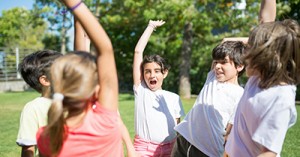
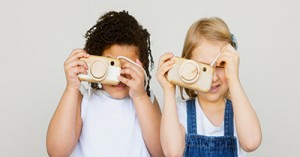
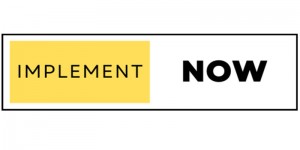
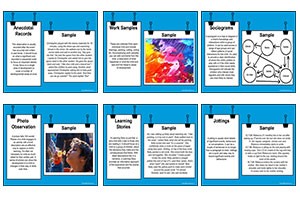
 Here is the list of the EYLF Learning Outcomes that you can use as a guide or reference for your documentation and planning. The EYLF
Here is the list of the EYLF Learning Outcomes that you can use as a guide or reference for your documentation and planning. The EYLF The EYLF is a guide which consists of Principles, Practices and 5 main Learning Outcomes along with each of their sub outcomes, based on identity,
The EYLF is a guide which consists of Principles, Practices and 5 main Learning Outcomes along with each of their sub outcomes, based on identity, This is a guide on How to Write a Learning Story. It provides information on What Is A Learning Story, Writing A Learning Story, Sample
This is a guide on How to Write a Learning Story. It provides information on What Is A Learning Story, Writing A Learning Story, Sample One of the most important types of documentation methods that educators needs to be familiar with are “observations”. Observations are crucial for all early childhood
One of the most important types of documentation methods that educators needs to be familiar with are “observations”. Observations are crucial for all early childhood To support children achieve learning outcomes from the EYLF Framework, the following list gives educators examples of how to promote children's learning in each individual
To support children achieve learning outcomes from the EYLF Framework, the following list gives educators examples of how to promote children's learning in each individual Reflective practice is learning from everyday situations and issues and concerns that arise which form part of our daily routine while working in an early
Reflective practice is learning from everyday situations and issues and concerns that arise which form part of our daily routine while working in an early Within Australia, Programming and Planning is reflected and supported by the Early Years Learning Framework. Educators within early childhood settings, use the EYLF to guide
Within Australia, Programming and Planning is reflected and supported by the Early Years Learning Framework. Educators within early childhood settings, use the EYLF to guide When observing children, it's important that we use a range of different observation methods from running records, learning stories to photographs and work samples. Using
When observing children, it's important that we use a range of different observation methods from running records, learning stories to photographs and work samples. Using This is a guide for educators on what to observe under each sub learning outcome from the EYLF Framework, when a child is engaged in
This is a guide for educators on what to observe under each sub learning outcome from the EYLF Framework, when a child is engaged in The Early Years Learning Framework describes the curriculum as “all the interactions, experiences, activities, routines and events, planned and unplanned, that occur in an environment
The Early Years Learning Framework describes the curriculum as “all the interactions, experiences, activities, routines and events, planned and unplanned, that occur in an environment
